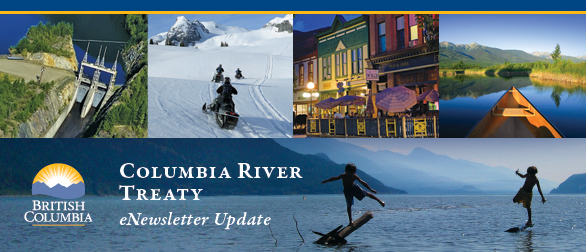Columbia River Treaty
Edition:

Treaty Review Question of the Month:
Why is Arrow Lake Reservoir Critical to Flood Control?
The Arrow Lakes Reservoir (Arrow), created as a result of the Columbia River Treaty with the 1968 impoundment of the Upper and Lower Arrow Lakes, was viewed as the most important Canadian reservoir for flood control during the original Treaty negotiations. The large amount of storage it could provide quickly and at relatively low economic cost had significant implications for the negotiation of downstream benefits and was the key to making the development of the Columbia River in Canada economic.
Arrow is important for U.S. flood control because it takes only four days for flow releases from Arrow to reach the lower Columbia. Four days is within the forecasting timeframe so Arrow, along with Grand Coulee, can be used to manage flows during flood events. Headwater reservoirs (for example Mica, Hungry Horse) have longer travel times.
Arrow is also an important reservoir for Canada because its storage provides a buffer between Mica and Revelstoke power generation and the U.S. power system. The Arrow Reservoir allows Mica and Revelstoke dams to be operated to maximize BC interests while ensuring Columbia River flows downstream of the Hugh Keenleyside Dam meets the downstream flow requirements specified by the Treaty.
Arrow has the most potential of any of the Canadian reservoirs to change operations post 2024. Although it is a large storage facility (7.1 MAF), it is a relatively low head dam with only 185 MW of installed capacity. If the Treaty is terminated, an optimal power operation would keep the reservoir near full to maximize the head. Essentially Arrow could operate as a run-of river facility with most of the flow regulation being provided by the upstream facility (Mica). Only a small draft at Arrow would be required for local Canadian flood control.
More information on the historical rationale for selecting Arrow and other Treaty projects can be found in Chapter IV of the 1964 document entitled The Columbia River Treaty and Protocol: A Presentation. Please visit http://blog.gov.bc.ca/columbiarivertreaty/history/





















